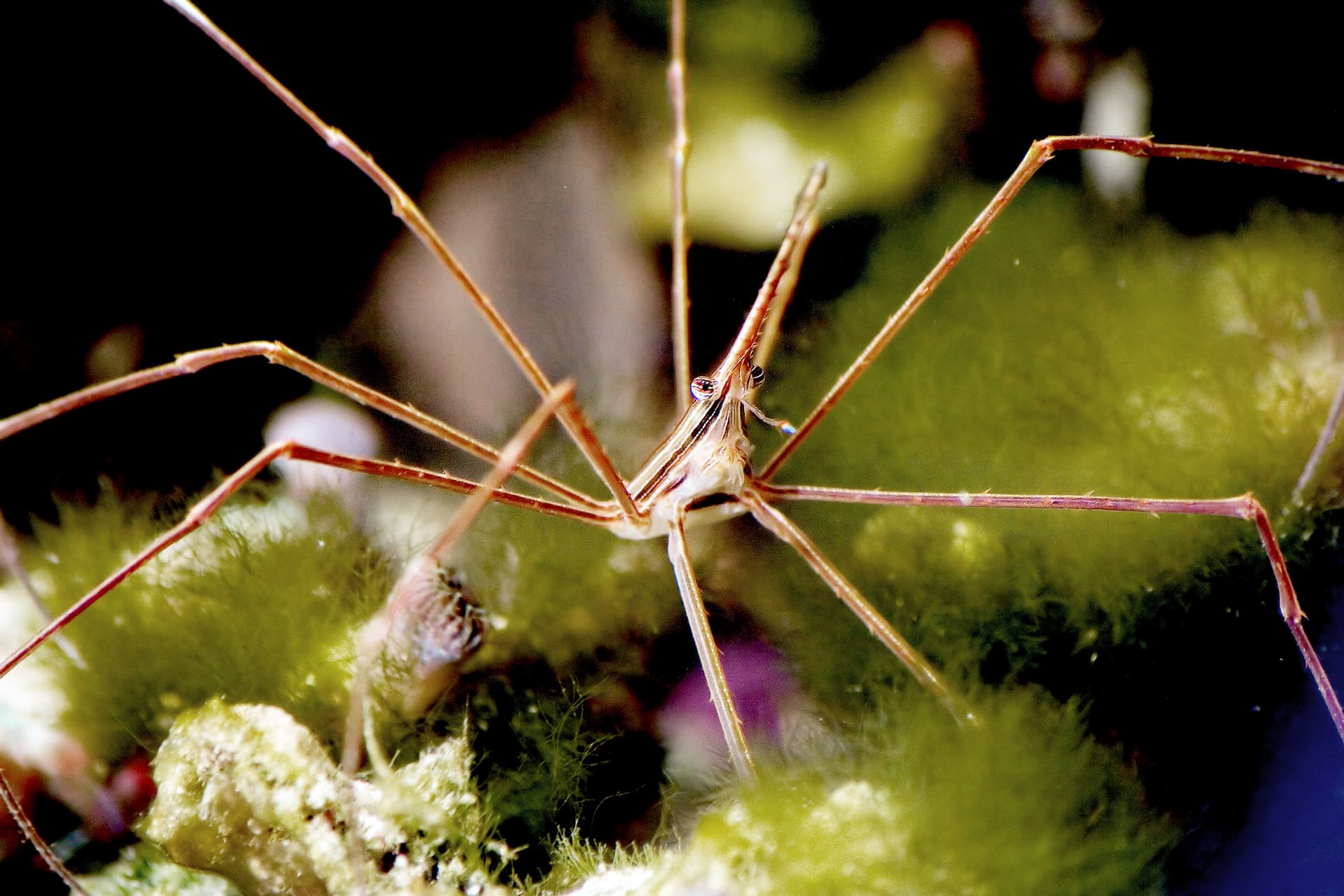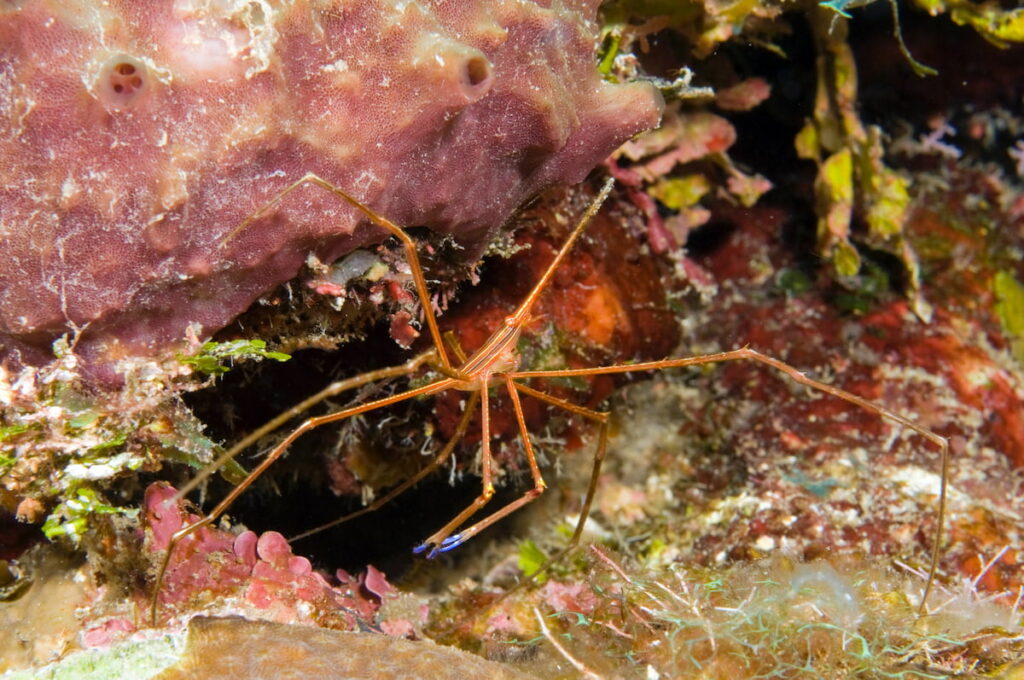All About Arrow Crabs
These spider-looking creatures have the coolest claws around

Along a bustling coral reef lit by sunlight, one can find an array of amazing creatures from surgeonfish to green sea turtles. After dark, these reefs are just as vibrant and a little spooky as some of our nocturnal underwater friends come out to roam the sea. These night shift species, while wonderful and majestic, can seem straight out of outer space or a horror movie–one such creature of the night, the arrow crab.
A warning before we proceed: Arachnophobes beware, one look at these spider-like crabs will send a shiver down your spine.
Get Ocean Updates in Your Inbox
Sign up with your email and never miss an update.
Arrow crabs are fascinating triangular-shaped crabs with 10 long legs that can measure at almost three times the size of their bodies which measure just 2.5 inches. These creepy crawlies are yellowish-red in color and are equipped with stunning bright blue or violet claws. They have very pointed heads with eyes on long stalks that protrude from their bodies With their small bodies and long legs, these crabs and their spider-esque qualities are sights to be seen.
During the day, these crabs prefer to hide in rocky areas, along coral reefs and in shipwrecks on the seafloor. Those aren’t all of their hiding spots, however; arrow crabs have also been known to hide in tube sponges, under anemones and in the spines of sea urchins. These top-notch hiding skills help these crabs evade predators such as octopuses, groupers and pufferfish. Arrow crabs have also been known to participate in some underwater arts and crafts as they camouflage their bodies with bits of algae to hide from their predators.
As predators and scavengers, arrow crabs spend most of their prime nighttime hours searching the reefs for their next meal. Typically, dinner for these crabs include algae, invertebrates, and many kinds of worms including bristle and duster worms. Arrow crabs are quite fast, which allows them to quickly grab their prey and scurry away from competitors. Small but mighty, arrow crabs have been known to be territorial and aggressive towards other sea life when threatened.
During mating season, a female arrow crab will carry her eggs under her abdomen until it’s time to hatch. Once hatched, these new creatures are called zoea [zoh-ee-uh] and look more like a bubble than a crab. Their transparent bodies float to the surface and feed on plankton, and they live along coral reefs once they reach adulthood.

Our ocean after dark is otherworldly. While the daytime shines the spotlight on colorful species in coral reefs, the night brings out some mysterious and oddly shaped creatures. Naturally, we ocean admirers love both versions of our wonderful ocean. Arrow crabs and their strikingly strange resemblance to daddy long legs are just one example of our world’s diverse sea creatures. There is still so much to discover and explore under the sea, but we must act now to protect the wonders of the ocean before more damage is done.